Milner’s Round Table as Grail Knights of Mithra: Solar Cults from Rome to the New British Empire
In the first segment of this series, we were introduced to the role of leading grand strategists of the British Empire- working in tandem with Jesuits-- in creating new synthetic cults which permeated Christianity and Judaism in the form of End Times eschatology of pre-millennial dispensationalism and political Zionism. The creation of a New Babylon and rise of an anti-Christ figure was there outlined along with the emergence of a neo-Templar cult devoted to recreating the Kingdom of Jerusalem purged of Arabs and Jews was also explored.
In part 2, we were introduced to the crisis of the British Empire of the late 19th century and the creation of two new priesthoods that oversaw a grand strategy to save the dying British Empire and revive a new world religion based on eugenics, race science, transhumanism, and a certain type of gnostic mysticism that was pervasive during the ancient pre-Christian age.
In this third installment, we will plunge much more deeply into the structure of the ancient mystery religions, and solar deities that were revived by the Round Table Movement and Fabian Society over a century ago.
This exercise will take us into the direct transformation of Mithraic, Cybele-Attis, Apollonian, and Isis-Osiris priesthoods, into gnostic Christian mystery cults, the battles that took place at Nicaea, the transformation of those cults into the Benedictine order, the Cult of Archangel Michael, the Cistercians, Templars, Franciscans, Dominicans and Jesuits.
In part four, we will review how this occult underground oversaw the creation of the Hellfire Club, Rosicrucianism and Scottish Rite Freemasonry with a view towards paganism, Luciferians and the Eleusinian Mysteries. Finally, we will be introduced to the role of Carl Jung and the rise of a New Age aquarian conspiracy that shaped a generation of baby boomers, and new sect of elite mystic warriors shaped by a modern Mithraic power center in Big Sur California dubbed ‘The Esalen Institute’.
The Round Table as Grail Knights of Mithra
The name of “The Round Table Movement” established by Cecil Rhodes and Lord Alfred Milner was taken from the Grail myths of the Round Table and the idealized knighthood of the Templar order that had overseen the centuries-long bloodbath known as The Crusades.
During these dark years, Europe’s population collapsed into feudalism and war with the Templars emerging as a Manichean secret military cult controlling the majority of banking across the Mediterranean world. This same order oversaw the age of the Crusades that coordinated forever wars between Christians and Muslims, giving rise to a Templar-dominated Kingdom of Jerusalem.
In fact, the 12th-13th century Grail romances, and the Templar knighthood of initiates were themselves a re-branded secret society based upon the warrior cult of Mithra that had served as a dominant mystery cult of the Roman legion. The Mithraic Cult had been introduced to Rome during the 1st century BC and oversaw Rome’s transformation from a republic into a full empire.
The late philosopher Lyndon LaRouche noted a particular meeting between priests from the mystery cults and emperor Tiberius (42BC-37AD) held on the Isle of Capri, which was a central command for the Cult of Mithra:
“The first century B.C. was a time of great troubles throughout the Mediterranean littoral. The priesthoods of the various forms of Great-Mother worship, the Syrian-Caananite Magi, the Ptolemaic cult of Isis, and of the cult of Apollo, were engaged in the effort to combine the conquests of Rome, Egypt, and Syria into a single world-empire. The bloody issue was, what would be chosen as the capital of this new empire? The leading contenders were Alexandria and the city of Rome. The decision was settled on the battlefield against Mark Antony and Cleopatra; Rome’s victory had been negotiated earlier, at a meeting on the Isle of Capri.”
caption: Emperor Tiberius
The Smithsonian website describes the Isle of Capri under the reign of Tiberius:
“In A.D. 27, at the age of 69, Tiberius moved to Capri to govern the enormous Roman empire from his dozen villas here. For more than a decade, according to his biographer, Suetonius, Tiberius wallowed in hedonism—decorating his mountaintop Villa Jovis, or Villa of Jupiter, with pornographic paintings and statues, staging orgies with young boys and girls and torturing his enemies. (The ruins of the villa still exist; its tunnels, arches and broken cisterns crown the island’s eastern cliffs, from which the emperor was said to have tossed those who displeased him to their deaths.)”
St. Bernard’s Benedictines and the Templars
When the Mithraic cults were illegalized in the early 5th century, they went underground and emerged in various Christian covers. It is likely that the Order of Benedict (founded in the early 6th century) served as a cover for the Mithraic rites.
In 523 AD, the Benedictines were gifted the Isle of Capri- with its vast catacombs, and Cybele-Attis temples, by a patrician devoted to St. Benedict named Patrizio Tertullo. The first official Benedictine Monestary was Monte Cassino Abbey built in 529 in the location of a shine to Apollo (a solar deity akin to Mithra and Lucifer). Like Tertullo, Benedict and his sister Scholastica were also from noble Roman Patrican families.
The bodies of St. Benedict and his twin sister Saint Scholastica (the founder of the order of sacred virgins called ‘nuns’) were discovered together in a massive urn which “was initially located underneath the primitive oratory of St. John the Baptist, built above the ancient acropolis’ pagan altar to Apollo.”[1]
Like Mithra, Horus and Lucifer, Apollo is a re-branded fallen solar deity dominant in ancient Rome and Greece.
Caption: Mithra, same as Sun god Apollo and transformed in the Roman culture name is God Sol İnvictus
Like Ignatius Loyola, who founded the Society of Jesus (aka: The Jesuits) 1000 years later, Saint Benedict isolated himself in a ‘sacred cave’ where, over the course of three years, he went through his mystical experience leading to the founding of new order. Also noteworthy was that it was at the Benedictine Monastery of Our Lady of Montserrat in Spain, that the Spanish mercenary Ignatius Loyola devoted himself to establishing his new society (more to be said on this below).
In the year 1098 AD, (coinciding with both the first Crusade and founding of the Kingdom of Jerusalem), a new, more strict Benedictine order calling itself the Cistercians was created.
Bernard of Clairvaux (1090-1153)- a grand strategist of his time, soon became a leader of this sect, and devoted himself to the cause of organizing another Crusade to take full control of the Holy Land, expel the Muslims, and reconstruct Solomon’s Temple.
Caption: Bernard de Clairvaux presiding over Crusader knights (left) and preaching the second crusade (at right)
Clairvaux was known as an Ultramontanist- who held the belief that the Pope was akin to an ineffable demigod beyond the reproach of any considerations of right or wrong. In this sense, Ultramontanists believe the papacy holds all the power enjoyed by the cult of the Roman Emperor and thus had a mandate to control both spiritual and material realms.
Clairvaux soon acquired the support of the powerful Eleanor of Aquitaine (1122-1204) and a network of powerful European noble families, installed his own Cistercian disciple as Pope (Eugene III) and created a new order of Christian mercenaries to become his instrument for managing the Crusades as well as the control of banking across Europe. This order was known as the Templars.
In 1128, Clairvaux wrote the charter for the Templars and created the legal arguments justifying the notion that Christians killing non-Christians was a ticket into heaven.
The Templars were, not so much Christian, as a pagan order of gnostic Christian mercenaries who ended up controlling the majority of banking and the administration of the Kingdom of Jerusalem until they were abolished in 1314, with their leaders burned at the stake.
Like the earlier abolishment of the Cult of Mithra, the Templars didn’t disappear, but turned up again in various other forms across the centuries which will be discussed shortly.
The Strategic Importance of Archangel Michael as New Mithra
The patron saint for the templars was the “celestial warrior” Archangel/Saint Michael, whose cult had been established in 494 AD by Pope Gelasius and Bishop Sipontum in Apulia.
As the story goes, in 493, the Bishop of Sipontum received three visions of the Archangel demanding that the church leader go into an obscure cave and transform a Mithraeum into a new holy site which became the Basilica at Monte Gargano in Puglien on the Adriatic.
Caption: Main altar of the Shrine of St. Michael the Archangel of Monte Gargano, located inside the grotto consecrated by the Archangel
According to the apocryphal tale, in 490, a hunter near the Mithraeum was hunting for a bull, as the Bull was emerging out of a cave, the Archangel Michael magically appeared causing the arrow to strike the hunter… converting him to Christianity.
CAPTION: Scenes from the retable of St. Michael the Archangel – St. Agnes Chapel, Diocesan and Cathedratic Museum, Valladolid (Spain)
After this cavern incident, the Mithraeum and new monastery of San Michael at Monte Gargano became the representative of the new warrior cult with Michael depicted as a heavenly demiurge draped in armor killing a dragon-figure representing Satan instead of a bull.
Another incarnation for Saint Michael became Saint George famously rendered as a knight killing a dragon which gave rise to the British Empire’s Order of St. Michael and St. George (est. 1818) for elite knights of the empire… such as Sir Henry Kissinger.
The shrine at Monte Gargano became a pilgrimage site for Gnostics for centuries with Bernard de Clairvaux, Thomas Aquinas (who authored the legal arguments justifying the Crusades for Pope Innocent III) and Francis of Assisi all making the sacred journey to the Mithraic shrine.
In the 6th century the Lombards, formerly pagan Odin worshipping warriors, spread the Cult of Michael westward and embraced it as the closest embodiment to Odin
The Mithraic Rites and Masonry
Among its various rites, the Mithraic Mysteries acted as a precursor to later developments of freemasonry featuring seven degrees of initiation. According to An Encyclopedia of Archetypal Symbolism, “Ascension was symbolized by seven grades of initiation, each stage governed by a ‘plant’: Raven (Mercury); Bride (Venus); Soldier (Mars); Lion (Jupiter); Persian (the moon); Courier of the Sun (the sun); and Father (Saturn). The ultimate goal was to transcend all levels of the cosmos and to attain the level of the fixed stars, or aeternitas.”
The fact that the seventh gate is defined by Saturn is indicative of the dark underpinnings to the Mithraic rites- as Saturn was known as the God that devoured his children after deceitfully murdering his own father by castration (under Gaia’s influence) and is recognized as a source of evil by many cultures. Saturn (sometimes called Chronos or Ahriman in Persia) is commonly attributed to the figure of Satan, and possibly the true source of Freud’s theory of the Oedipal Complex.
While great secrecy was maintained, it is known that this sect conducted their rites to the Sun God Mithras in underground crypts (known as mithraeum), and featured the castration of a bull, and a birth-death ceremony of initiates not unlike the practices of modern secret societies like the Skull and Bones or Scottish Rite. A sacred sacrament– likely involving a near death experience of higher initiates, and possibly a hallucinogenic cocktail imply that some form of Eleusinian mystery ceremony had been incorporated into the Mithra cult.
CAPTION: Mithra murdering a bull
Grand Master of the Scottish Rite, and Confederate General Albert Pike stated of the rites in his Morals and Dogma:
“The Mithraic Mysteries were celebrated in caves, where gates were marked at the four equinoctial and solstitial points of the Zodiac; and the seven planetary spheres were represented, which souls needs must traverse in descending from the heaven of the fixed stars to the elements that envelop the earth; and seven gates were marked, one for each planet, through which they pass, in descending or returning.”
Mithra, sometimes dubbed ‘Sol Invectus’ (the invincible sun) was a Zoroastrian Sun God imported into Persia from India and then into Rome under the reign of Pompeii in 63 BCE. In other ancient cultures, the god Mithras took the form of names like Horus, Marduk and Apollo.
However, the particular form of the Mithra cult as it appeared after the murder of Julius Caesar in 44 BC, has distinct features unknown in its previous Persian or Indian incarnations. Unlike the earlier Persian, Phrygian or Indian variants, the Roman cult of Mithra maintained supremacy in heaven by periodically castrating a bull figure which represented Mithra’s rival Ahura.
Various theories have circulated attempting to explain the meaning of Mithra’s slaying of the bull (portrayed on hundreds of Mithraic temples), ranging from the ending of the age of taurus (around 2200 BC), to the victory of good over evil. While both of these explanations may have a touch of truth, as occult myths tend to have multiple meanings, a body of scholars have pointed out that the symbolic meaning of the portrayal of Mithra’s sacrifice of the bull actually points to the murder of Julius Caesar who represented himself as a bull (featured on Roman coins).
Caption: Silver Denarius representing on the obverse Caesar and on reverse a bull
Additionally, evidence of human sacrifice in Roman Mithraeum [1], was also not known in eastern Mithraic ceremonies.
Over the next centuries, the Cult of Mithra and the new Christian movement would compete- with Nero becoming the first Emperor to be (officially) initiated into the Mithraic mysteries as part of his broader program to wipe out the early Christians.
The Compromise of the Council of Nicaea (325 AD)
Christianity found major victories with Constantine’s edict of toleration in 312 AD, and the 325 AD Council of Nicaea which created a central governing agency for Christianity which had formerly been a highly decentralized and infiltrated movement with many gnostic pseudo Christian cults like that created by Simon the Magus which sought to destroy the new movement from within.
(Note: For an invaluable lesson into the principled battles shaping the early church and the countless mystery cults infiltrating Christianity, see: St Irenaeus of Lyon’s Against Heresies.)
While the political power gained by the Council of Nicaea ensured Christianity’s survival, many unfortunate compromises were made by early Church leaders, who agreed to infuse already existent Pagan rites such as the establishment of sacred meals (called Sacraments). The creation of Popes based in the Vatican dubbed ‘Holy Fathers’, and edicts of celibacy for Hierophants, and a myriad of other rites were infused into Church practice which were not found anywhere in the gospels.
The compromises were certainly painful, but a demonstration in real politick, arguably necessary for the establishment of the Nicene Creed as a form of universal pre-amble upon which the Church would now be based. Just as the American constitutional convention could be seen as an assortment of compromises with evil (giving slaves only 3/5 the status of citizens for example), it was a victory in establishing a federal nation for the first time centered around a constitution with a moral pre-amble. So too, must the convention of 325 be seen.
The Nicene Creed stipulated that the central doctrine of Christianity would be the faith that all mankind were made in the living image of God (Imago Viva Dei) and had the mandate to participate in creation (Capax Dei). This doctrine was a major departure from the norms of all pagan cults which tended to reduce humanity to the status of other beasts under various types of nature worship rituals. The Christian doctrine generally, and the Nicene creed specifically, placed humanity on a divine pedestal as steward of nature instead with many higher moral responsibilities to both be fruitful and multiply.
Mithra vs Christianity
Although celebrated as a Christian, Emperor Constantine himself was an initiate of the Mithraic mysteries and after Nicaea, never renounced the rite even after becoming Christian. After Nicaea, he established Christian temples above Mithraeum across the Empire, hundreds of which have been discovered to this day.
The Mithraic Cult was given one final burst of revenge under the reign of Julian the Apostate- the last of the pagan emperors, in 361-363 AD, who also revived Nero’s persecution of Christians. Julian was himself initiated into the higher Mithraic mysteries and it is perhaps no coincidence that Carl Jung 2000 years later believed himself to be the re-incarnation of Emperor Julian.
It was only with the edicts of Emperor Theodosius I in 394 that all mystery cults were illegalized, the Sibylline oracles were burned and the Mithraic sect was forced to go underground- often taking the form of Christian clothing… explaining why so many Mithraic temples have been found under early Christian churches, including Vatican Hill, under the Church of St. Clemente, near the Colosseum in Rome and the Church of St. Saturnin in Toulouse.
A Mithraeum under Rome’s Basilica di San Clemente
To this day, Mithraic cult temples where pagan ceremonies and sacrifices took place have been found across England, France, Germany, Ireland, the Levant and Jerusalem.
Classics scholar Laura Hayward notes:
“By the fall of the Roman Empire, there were thought to be over 600 Mithraea just in Rome alone. To date, archaeologists have discovered evidence of Mithraeums in over 400 spots across Europe. The London Mithraeum is a particularly fine example. In September 1954, a marble bust of Mithras was unearthed at an excavation site in Walbrook. This discovery confirmed the identity of a nearby structure as a Mithraeum.
“Many Mithraea are often discovered underneath Christian churches, such as the Basilica of San Clemente in Rome. The internal decoration of Mithraea was very consistent and included images of Mithras and simple raised platforms for communal meals. However, there was no external decoration at all. The austere Mithraea could not have looked more different from the ornately decorated marble temples of state religion in ancient Rome.”
CAPTION: 12th century Basilica of San Clemente in Rome- beneath the church lies a Mithraeum
Despite its official elimination in the 4th century, many renditions of Mithra have been found carved into base reliefs on dozens of churches across Europe constructed long after the fall of Rome. Take for example the Monreale Cathedral in Sicily which features a Medieval Mithraic character killing a bull crafted during the 12th century.
Caption: a 12th century stone carving of Mithra on Sicily’s Monreale Cathedral
In the 1947 study ‘The Arrow and the Sword’, Anglican researcher Hugh Ross William writes: “When the struggle between Mithraism and Christianity ended in the definite triumph of the latter, the higher ritual still survived and was celebrated in sites removed from the centers of population.”
The Templar Crypt in Jerusalem, claimed to be the location of Solomon’s Temple which Julian the Apostate had earlier sought to rebuild was possibly a Mithraeum, and it is no coincidence that the name of the Templars were dubbed ‘Poor Fellow-Soldiers of Christ and of the Temple of Solomon’ and sought to rebuild Solomon’s Temple as part of an End Times initiation process.
In 1209, after the Templars had overseen the fourth Crusade (consolidating Venice’s control over Byzantium’s former trade routes) another order was created by Pope Innocent III dubbed ‘The Franciscans’ which revived a form of pagan nature worship led by a mercenary-turned monk named Francis of Assisi. Francis soon established an order using the Cross of the Kingdom of Jerusalem (then under the firm control of the Templars) as its emblem [see images below].
The Franciscans: Gateway to Fabians
Like it’s later incarnation as the Jesuits, the Order of the Franciscans would operate as a back-to-nature cult with degrees of initiation featuring exoteric and esoteric (hidden teachings).
And like Ignatius Loyola (1491-1556), the founder of the Jesuits, the order’s founder, Francis of Assisi (1181-1226) was a rich mercenary who saw visions while recuperating from battling in the Crusades. Unlike Loyola, Francis became famous for delivering sermons to humans, dogs, birds and trees arguing that all were equally divine having been created by God.
Another point of continuity bridging the Mithraic-Benedictine Order with the Jesuits was found in St Francis’ pilgrimage to the Cave of Sacro Speko in Subiaco Italy in 1223, where he received his stigmata. Inside St Benedict’s famous cave sits a portrait of Francis who commissioned a local artist to paint it.
CAPTION: Cave of St Francis https://yandex.ru/video/preview/12156132642670825730
Francis’ earlier revelation of divinity at age 16 within a cave of Mount Subasio in Assisi, Italy was the first of many crypto-Mithraic ceremonies that shaped his life. The Catholic Herald notes that “St Francis believed that by praying in caves formed by that impact of the Crucifixion he was entering not just into the earth, which was split at the moment of Christ’s death, but also into the heart that split them as it was broken wide open. He desired to enter into Christ’s wounds.”
CAPTION: St. Francis of Assisi Preaches to Birds
While appearing innocuous, this elimination of the qualitative difference in the lives of humans, dogs or trees presents a moral problem for anyone wishing to argue against the need to reduce human population levels or kill off the elderly, sick or other “useless eaters” in times of scarcity. This devaluation of human life to the status of animals was a dominant characteristic of Magna Mater (Great Mother) earth worship cults such as Demeter, Cybele and Gaia.
Those earth mother mystery cults were a driving force in the destruction of Greece and Rome earlier, and all of them interfaced with priests of the Cult of Mithra and while many gnostic Christian sects were created by the priests of these orders (such as the Manicheans, Valentinians, Marcionites and Carpocratians), they all shared the common features of bestializing its initiates, reducing spirituality to erotic passions, promoted gnostic knowledge for initiates devoid of reason, and all were at war with Christianity for centuries during the Roman Empire.
It cannot be over-stated that all fascist systems require the elimination of the notion that humans are qualitatively better than lower animals, and the controllers of the Templars and Franciscans would have understood this well.
This evidence can be seen by Francis of Assisi’s close collaboration with Dominic Guzmann (1170-1221), founder of the Dominican Order which was central in the formation of the Inquisition and “righteous” torture of anyone unfortunate enough to be labelled “heretic”.
Although nature-loving Franciscans appear to be in total opposition to violence-prone Dominicans, much like the apparent opposition in the pacifist Fabian Society members and more brutal Round Table movement of Oxford Knights of the 20th century, the Franciscans simply served as a controlled opposition representing a passive counterbalance to the active force of the Dominicans. The feminine mystic energy of earth-worship that counterbalances the male energy of war.
And just as many Fabians and Round Table members worked on common projects (like the five Rhodes Scholars who created Canada’s Fabian Society in 1931), so too have many Franciscan priests found themselves occupying the position of Grand Inquisitor.
Like the Cult of Cybele and Mithra of ancient Rome, both sects were united in the common opposition to the notion of the divine perfectibility of humanity as a species made in the image of the Creator- as outlined in the Nicene Creed.
While the Dominican/Franciscan orders were forced to maintain a Christian doctrine that upheld the Nicene Creed- their modus operandi of preaching to fish or burning heretics completely annihilated any positive moral ideals one wishes to believe in. This author is not able to prove the existence of degrees of initiation into higher mysteries in either order, but, but like the Templars, Rosicrucians, Freemasons, or Jesuits, it would not be a surprise to discover this to be so.
It is also a fact that both Guzman and Francis of Assisi were given Papal orders by the same Crusader Pope Innocent III, were both turned into saints (and thus became sacred cult-figures) and both proselytized to Crusader mercenaries in the Middle East.
The Franciscan order’s direct role in shaping the formation of the Jesuit order and the thoughts of Ignatius Loyola have been outlined eloquently by Professor Franco Mormando of the University of Boston.
A Word on Jesuits and Cecil Rhodes
The direct continuity of the Mithraic cult into the Cistercians, Templars, and onward into the Franciscan Order, which in turn spawned the Jesuit Order of the 16th century provided a guiding light to Rhodes when he called his secret society to be modelled on The Jesuit Constitution.
None other than Scottish Rite Grandmaster, confederate general and leading occultist Albert Pike took note of the Templar-Jesuit connection when he wrote in his Morals and Dogma that: “Templars were unintelligent and therefore unsuccessful Jesuits.”
Roundtable controller, occultist and publisher William T. Stead noted Cecil Rhodes’ Jesuitical inspiration saying:
“Mr. Rhodes was more than the founder of a dynasty. He aspired to be the creator of one of those vast semi-religious, quasi-political associations which, like the Society of Jesus, have played so large a part in the history of the world. To be more strictly accurate, he wished to found an Order as the instrument of the will of the Dynasty, and while he lived he dreamed of being both its Caesar and its Loyola.”
Since the Fabian Society played such a central role in the events of the 20th century alongside the Round Table in bringing about a new world order founded upon a new priesthood of scientific engineers, and a new world religion, a word on the ancient cult roots of this group will be developed in our next segment.
[1] https://www.pilgrim-info.com/montecassino-abbey/

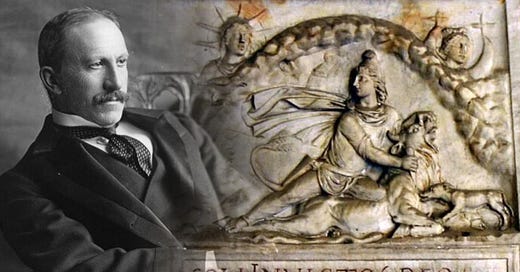




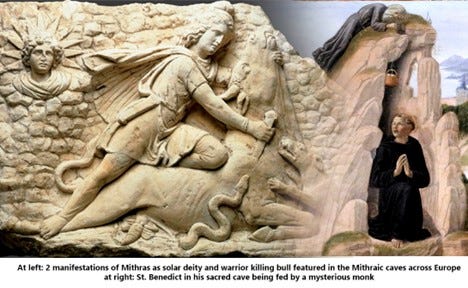
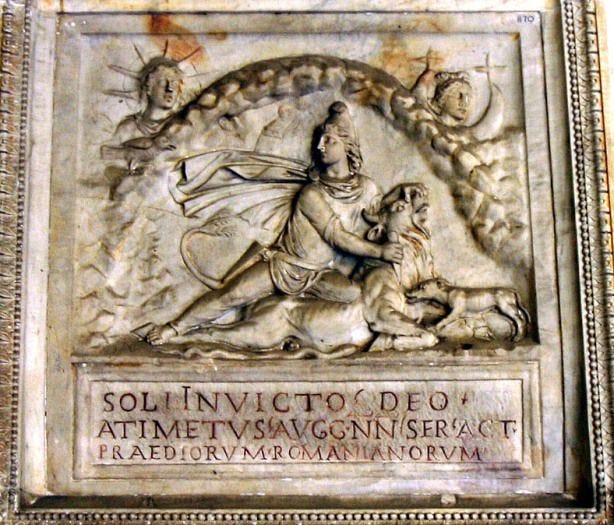
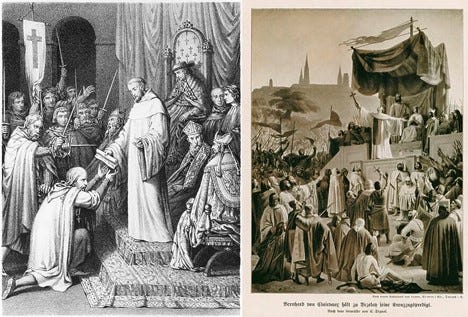
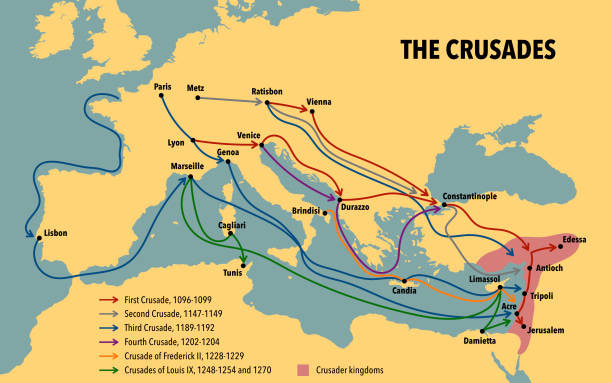

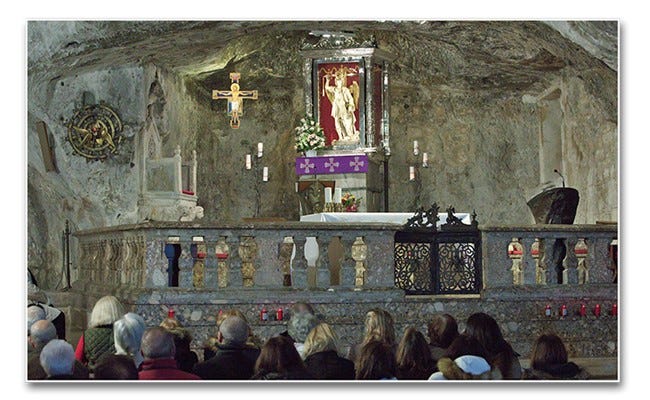
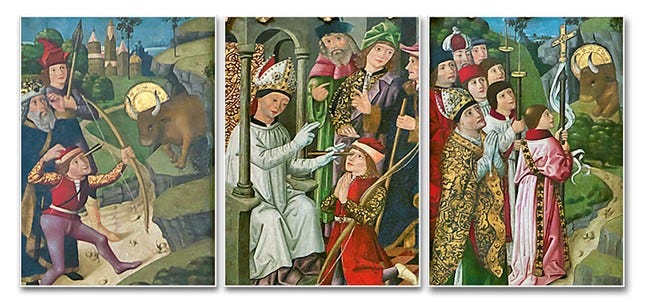
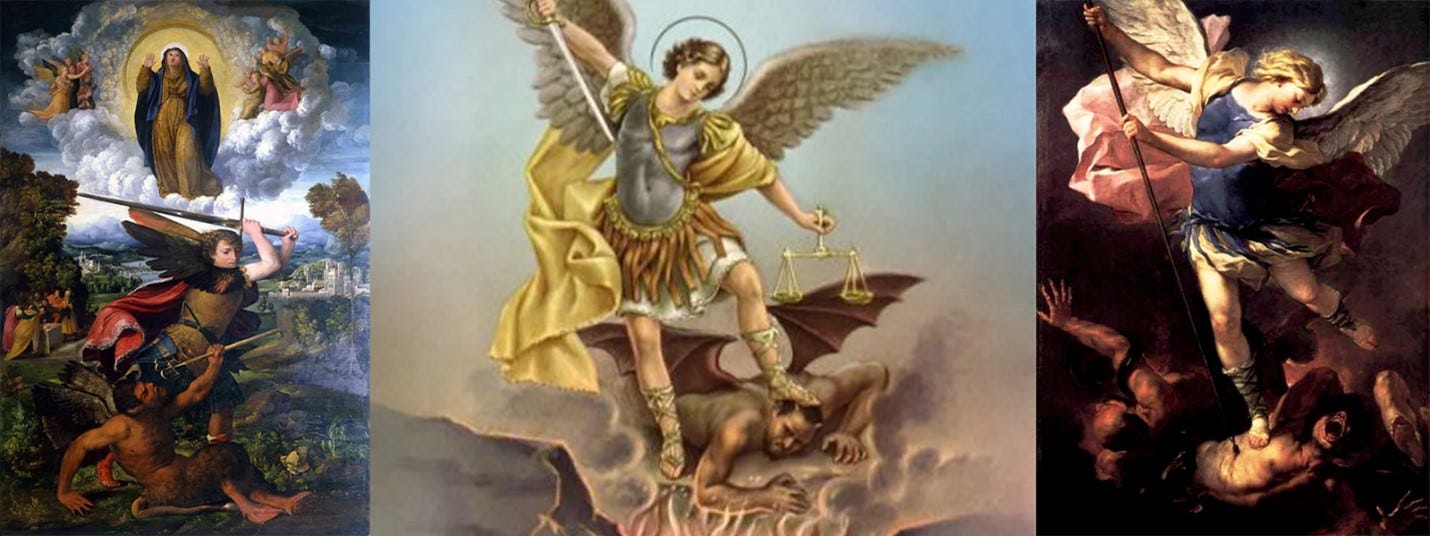

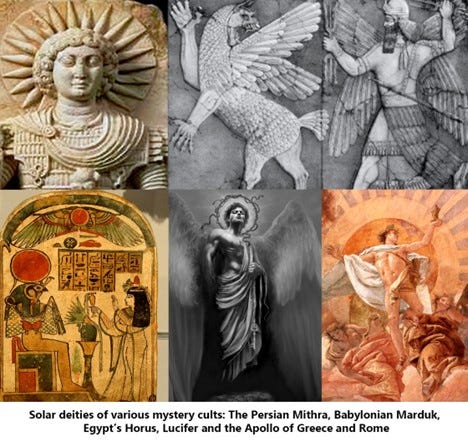
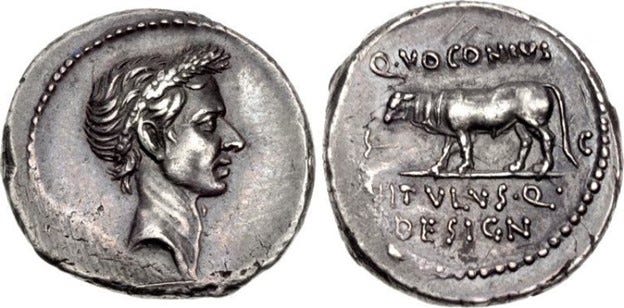
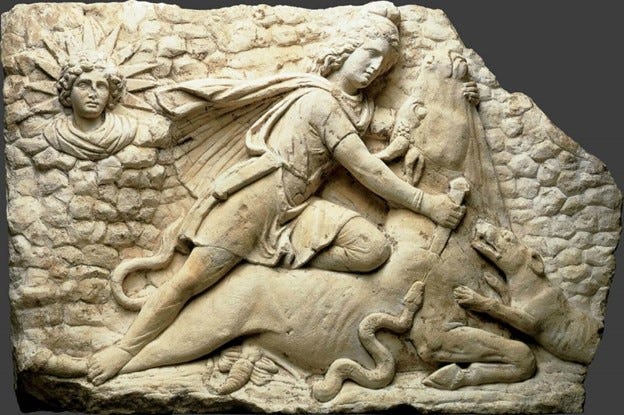
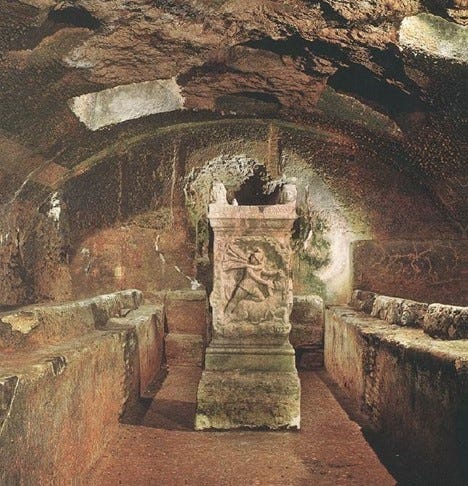
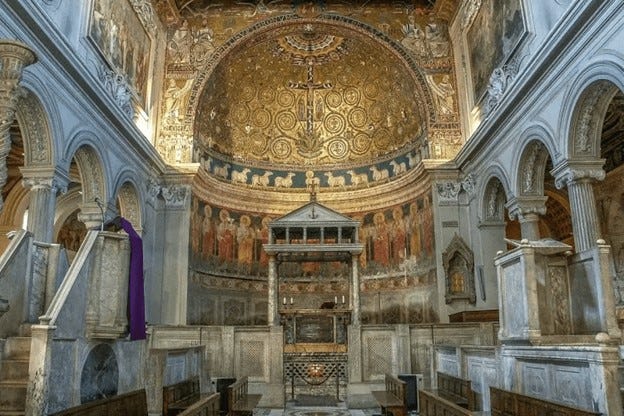
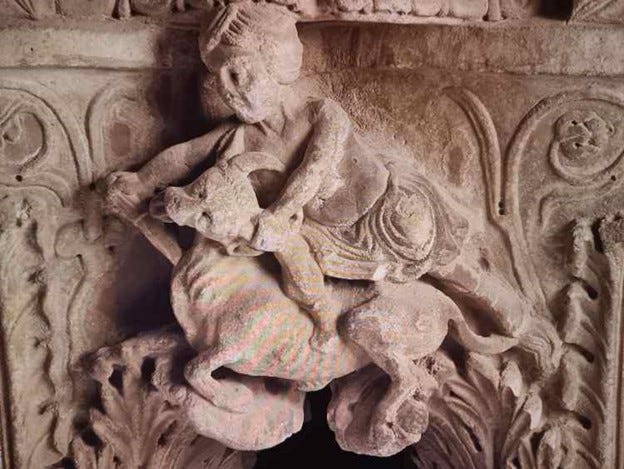
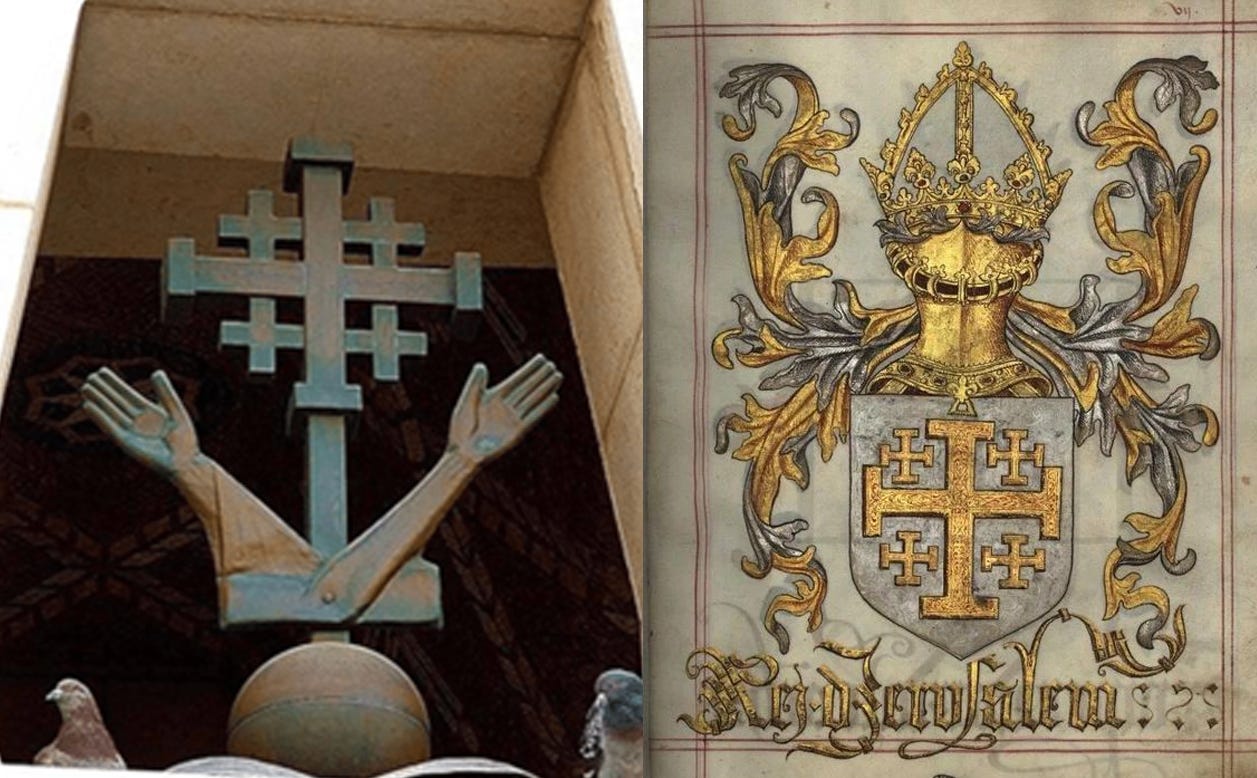
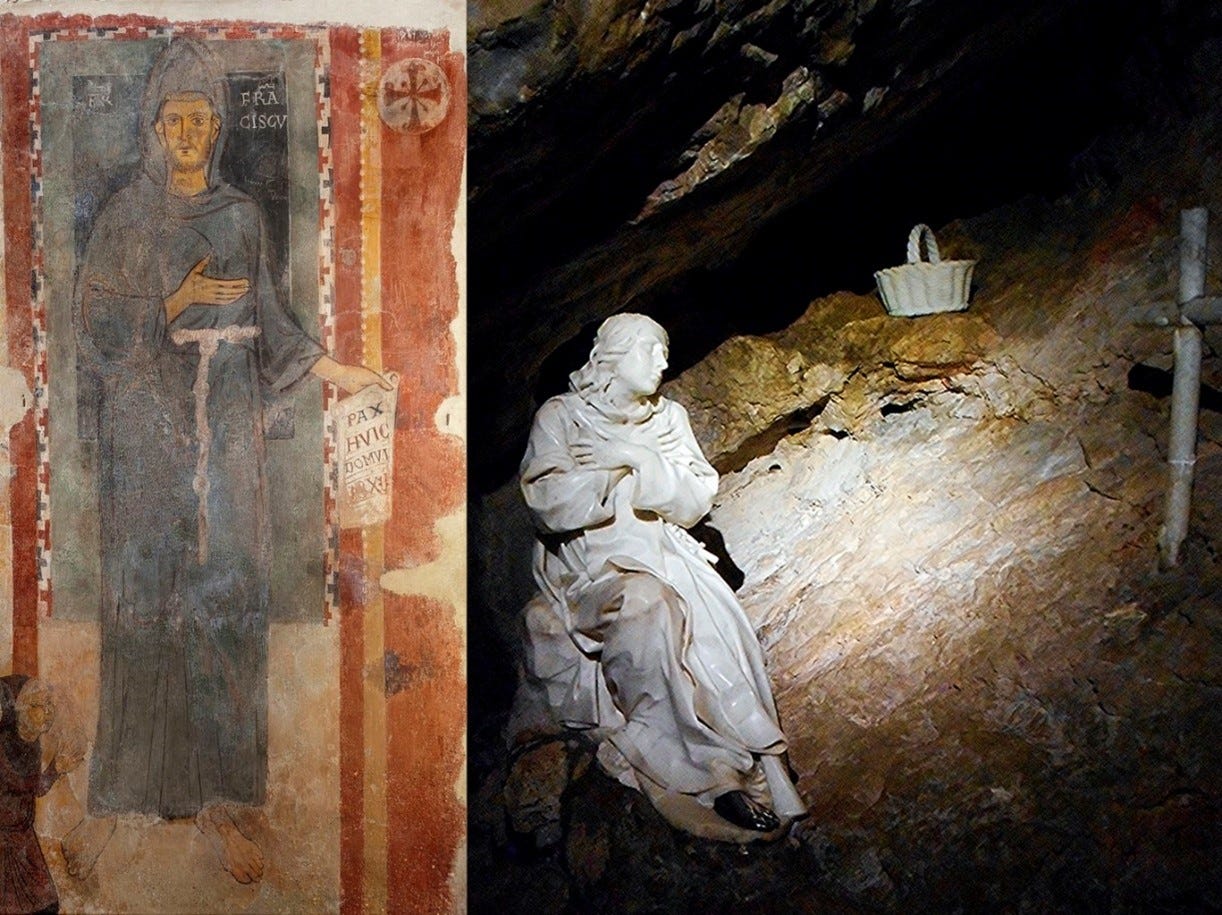
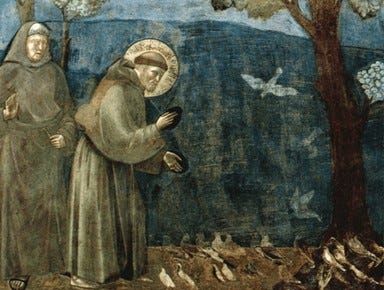
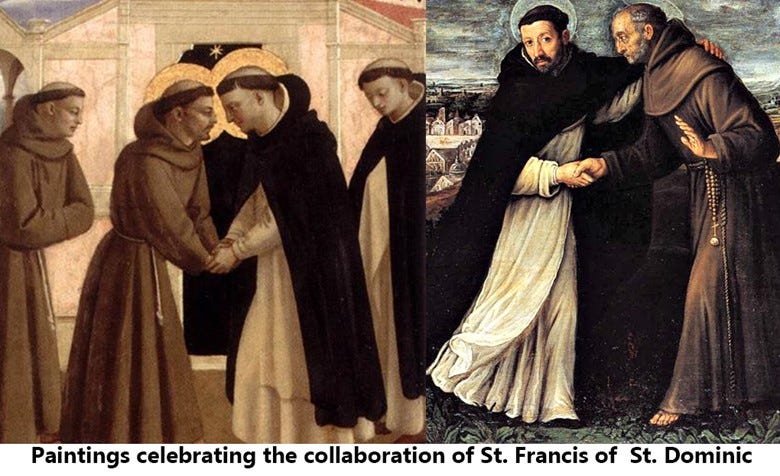
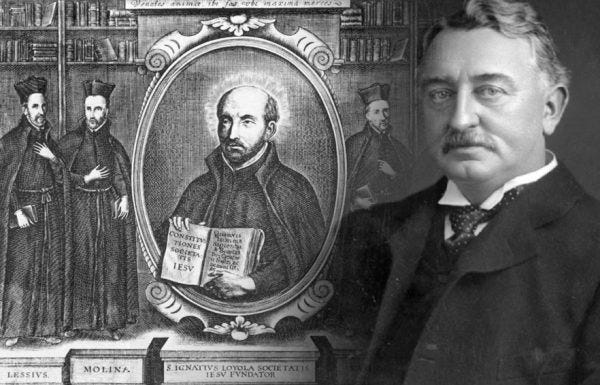



The secrecy surrounding these cults is linked with them throughout centuries. Vision and prophesy was sealed not long after Christs' resurrection and the death of those few men who were given power from God to establish his only Church, as documented in the book of Acts. The purpose of vision and prophesy in the OT was to bring about Christ. In the NT to form his to be bride (singular just like a faithful relationship) the Church. Anybody claiming dreams and visions after this time would have been high or lying. Information spread I believe is the enemy of these cults of power, but their reocurance in different names same practices is telling of the same spirit. Nice work.
Someone commented in another Stack article that I must be a "follower" of this author. I admitted never hearing of ME but would look him up. Wow! The depth of knowledge and exposure of the underlying cause of evil in the world is... well, one might think M. Ehret was once a part of it.